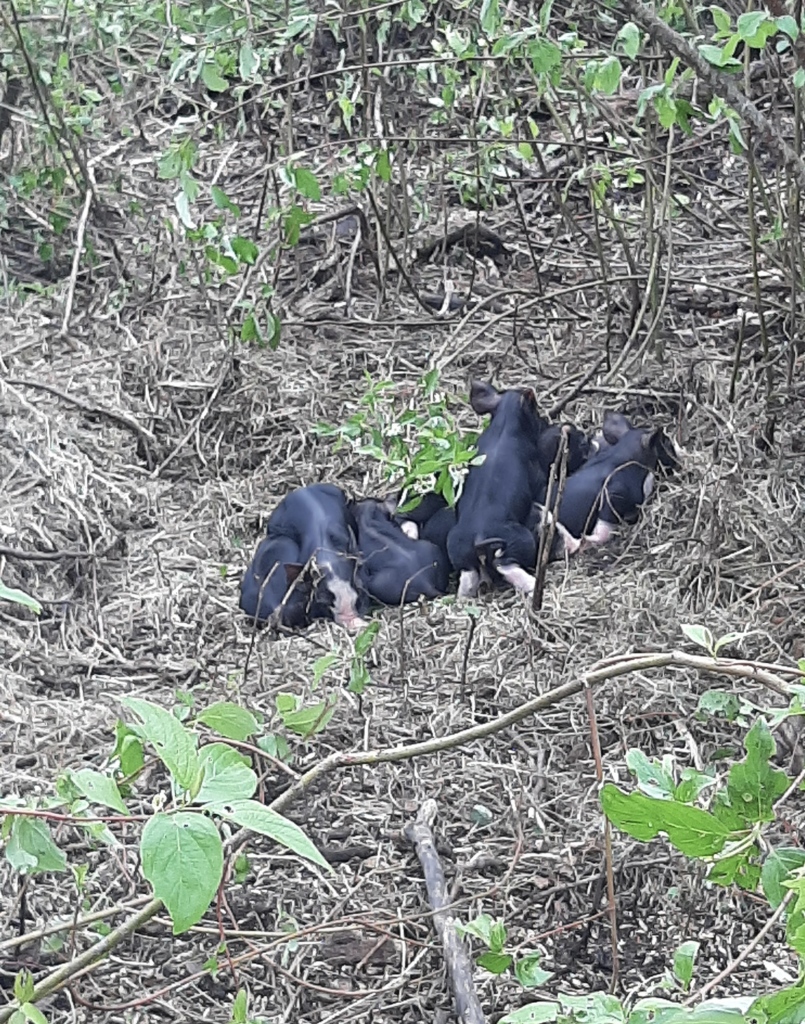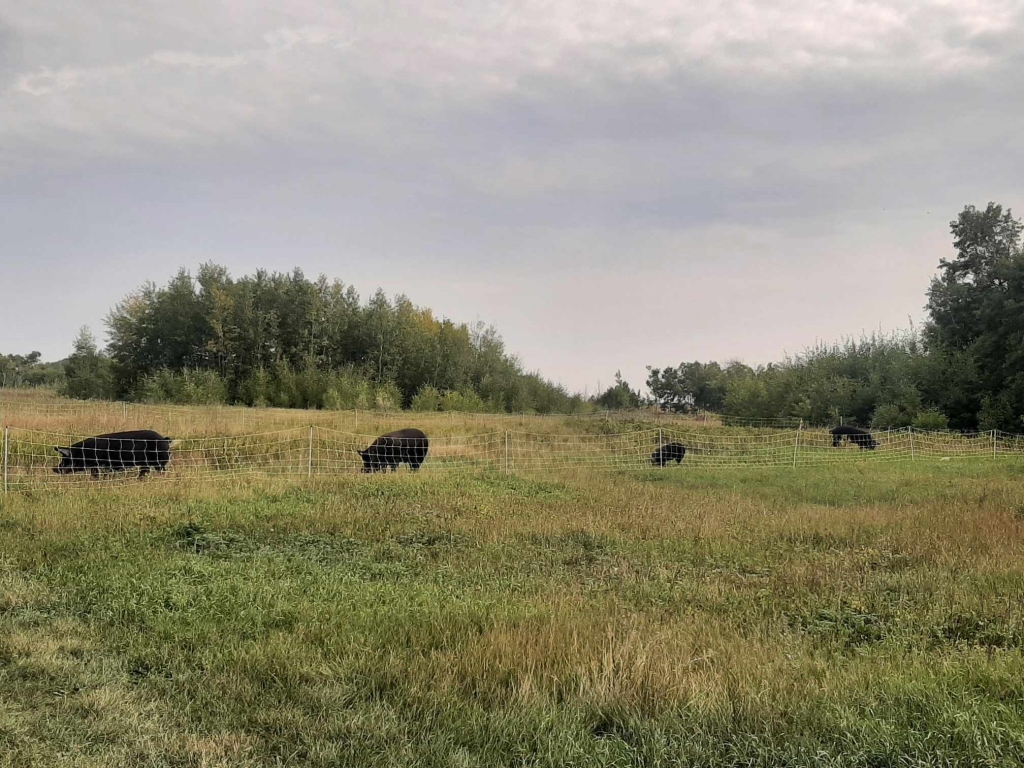
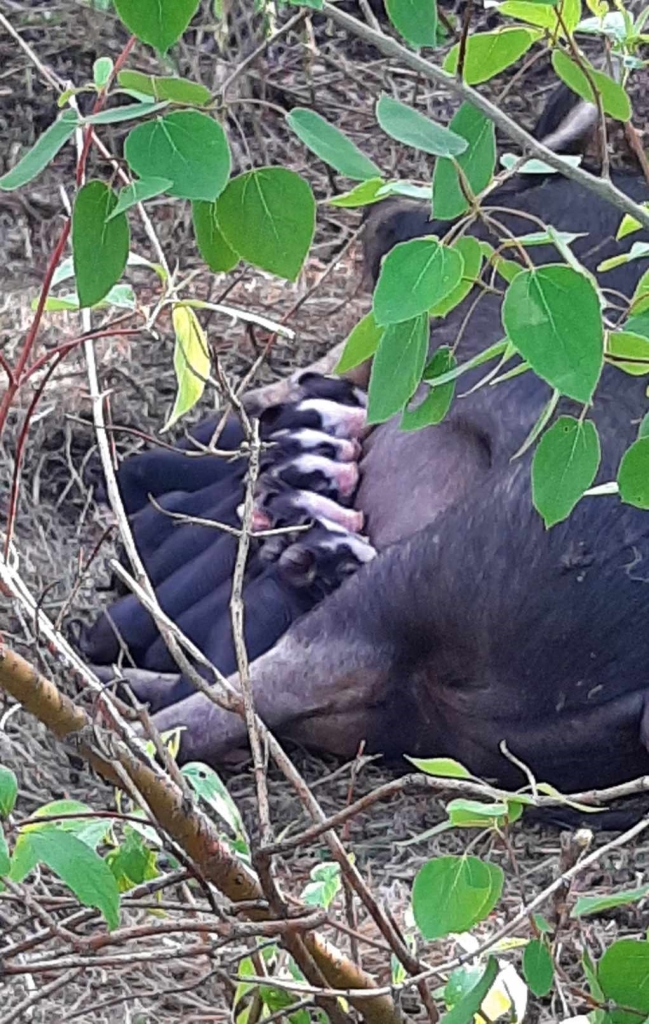
While Berkshire are currently designated as ‘critical’ in status in Canada – meaning overall numbers are extremely low – there are still breeders dedicated to the breed and its continued existence.
Jessie Leigh Johnston and her husband are among those raising Berkshires today, although they are relative newcomers to the breed.
“This is our third year working with Berkshires,” said Jessie Leigh Johnston.
Johnston said it was in 2019 they were introduced to the breed when they purchased some feeder pigs for their Rocanville, Sask. area farm — Wait N See Acres. It was a case of just getting into some livestock at the time.
“I grew up on a small farm,” said Johnston, adding that experience made it easier to move into pigs, as they began to formulate a plan for their small farm and family – they have three children Gabriel, Emily and Hazel.
“We were looking into how to make the farm sustainable and to build up from there,” explained Johnston.
“We started with chickens – meat birds,” she continued.
The chickens went well, so what was the next step in a plan toward a sustainable small farm?
Pigs seemed the best answer to that question, but which pigs.
Johnston said they did some research and found that Berkshires seemed like a good fit.
The information for example suggested “they were more healthy for our weather.”
That in itself was important because the plan was to raise pigs as naturally as possible – meaning on pasture, including at farrowing time.
The research continued.
“As we learned more about it we found they (Berkshires) have a really good temperament,” said Johnston, another key factor when you have to handle pigs outside.
“We don’t want to raise them in a barn.”
Johnston said they want their pigs to be as a natural possible “someone to look out for them, but raised as animals.”
So they took the plunge.
“After we got our first one there was no going back,” she said.
Johnston said they had been told pigs could be rather ornery and unruly critters that were often difficult to deal with.
“These are the complete opposite of that,” she said, an indication the research on Berkshires having a fine temperament has proven accurate.
What has proven more difficult is finding Berkshire genetics. Johnston said when they first got into the breed there were roughly 15 breeders left in Canada.
“And that’s gone down the last few years,” she added. “We are working diligently to conserve this remarkable breed right here.”
That means bloodlines are limited, but there is also something sort of special in working with a rare breed.
“We’re kind of working with a breed that’s kind of going under. That’s really sad because they’re an incredible breed,” she said, adding it is becoming something of a passion being part of keeping the breed alive and thriving.
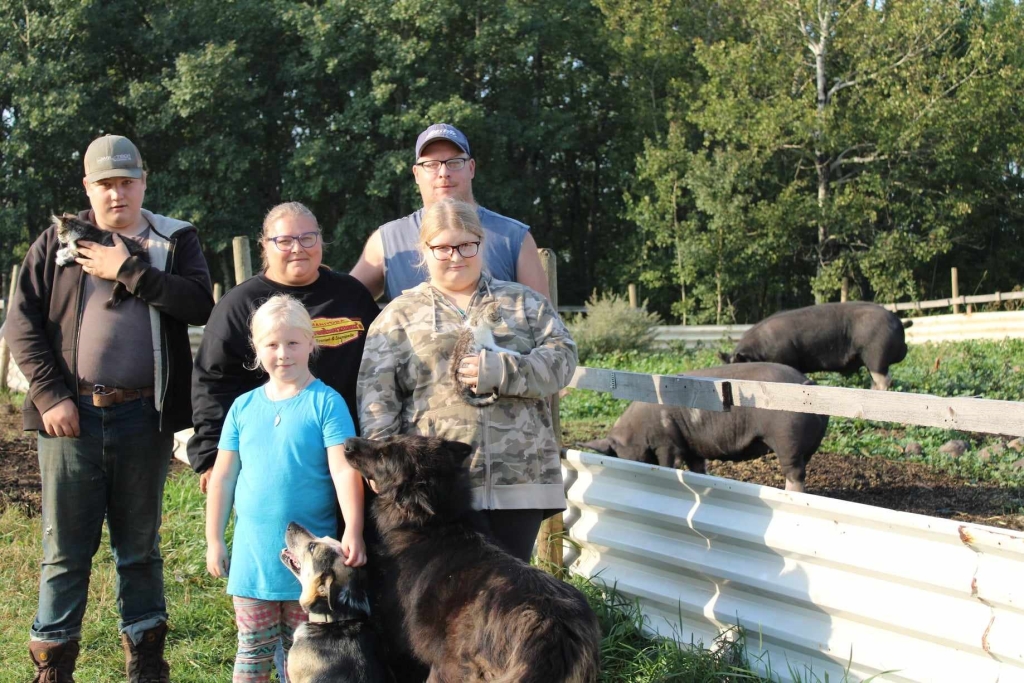
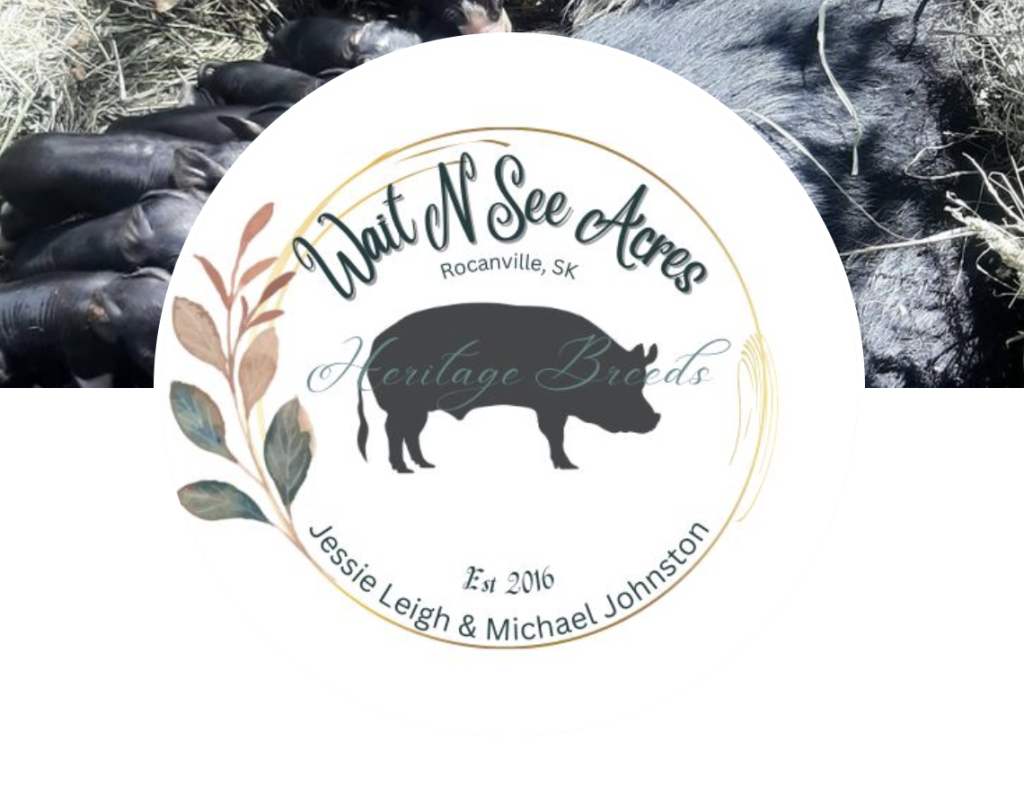
At present Wait N See Acres has a small herd – four sows and two boars – although Johnston said that will likely grow albeit not quickly.
“This is us just getting started . . . Were finally getting into a routine and a groove here. The skies the limit,” she said, adding they have 40 acres that could pasture pigs, then adding “It’s really hard to find (other bloodlines),” she said.
That is why they work with Heritage Livestock Canada with an eye to maintaining a more heritage style Berkshire – a version of the breed closer to it’s United Kingdom roots what Johnston terms “an old school version of Berkshires.”
So now, while some of their stock still ends up in the freezer, their own as well as local sales, Johnston said they also see the importance of what they produce as potential breeding stock.
In that regard Johnston said while their own knowledge is still developing, they are more than willing to share what they do know with others, adding there has been some interest as people learn they have Berkshires.
“There have been a few people who have reached out, and we are very happy sharing our knowledge,” she said, adding for the long term preservation of the breed they would love to see others involved. •
— By Calvin Daniels
Photos supplied from Wait N See Acres
